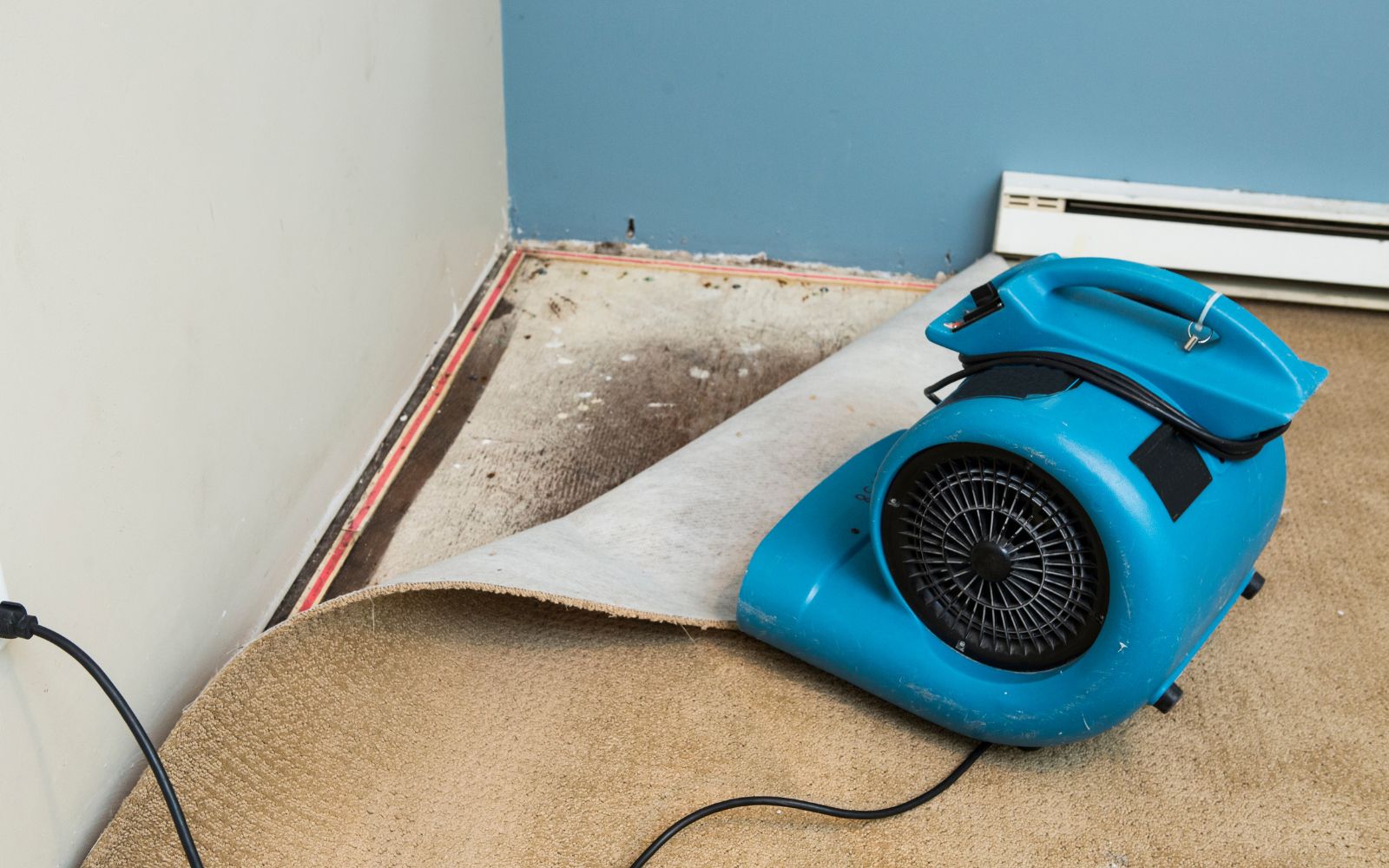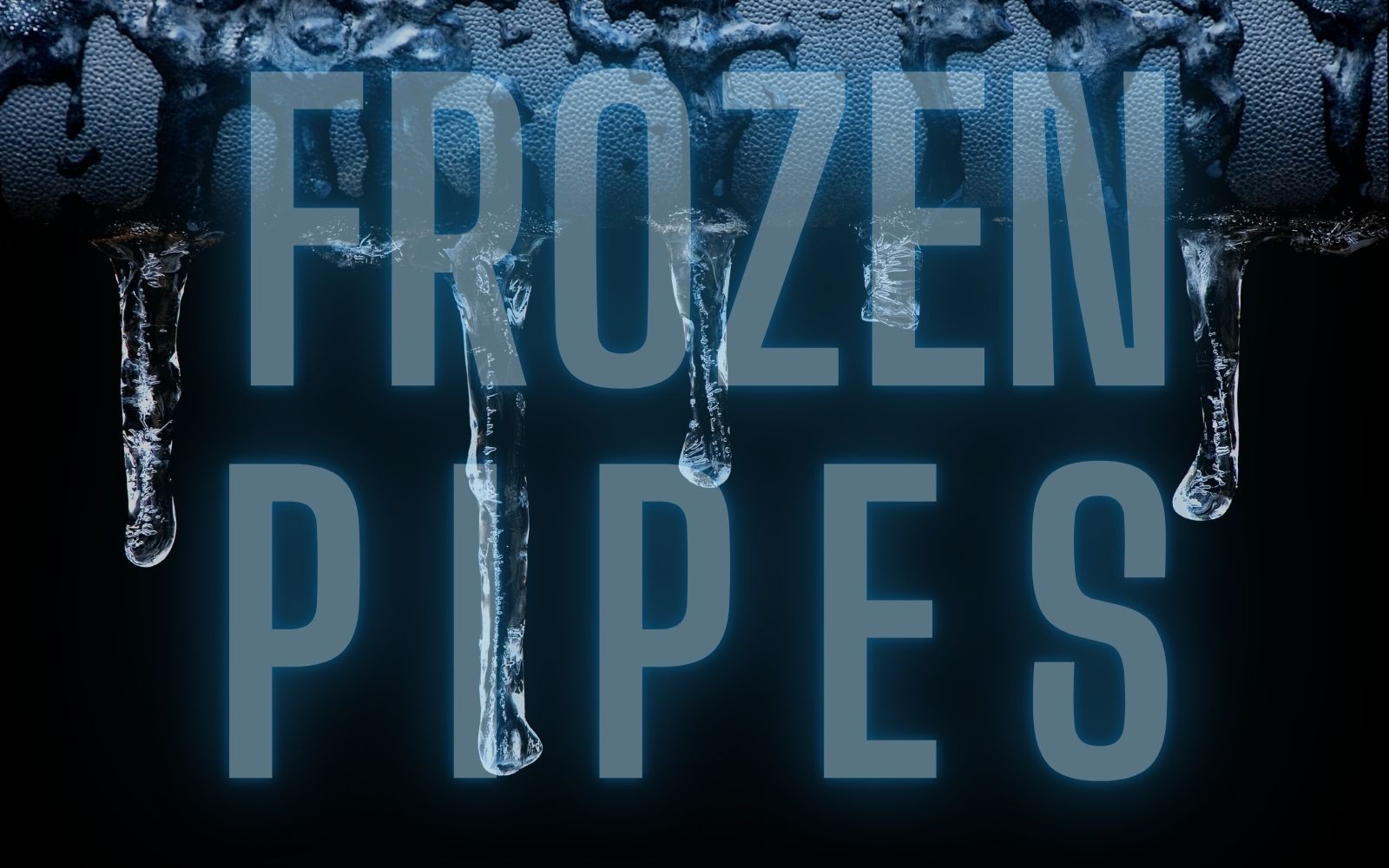If just a frozen pipe has occurred.
Be sure to switch off the main water valve and open any faucets connected to the freezing pipes. This will reduce pressure on the pipes and help prevent flooding if they burst. If the pipe is visible, use a hair dryer or space heater to safely thaw any ice blockages. Carefully inspect all exposed pipes for leaks – even with the water turned off, pressure can reveal a leak once it’s been thawed.
It is recommended that you contact a professional plumber equipped with specialized pipe-thawing techniques and equipment. They can ensure that your plumbing system is in working order and, if needed, make repairs to any damaged or weakened pipes. Also, if there are no leaks present, be mindful of potential future failure due to stretching and fatigue caused by hard freezes.

In Case of Flood – Assess the damage.
The first step one should take is to assess the damage. Check for water damage, mold, and electrical issues. Knowing that the home may have been affected in more ways than one might think, this is essential. Even if your pipes were not frozen and burst, the water that caused them to burst is still around—and this water can cause further damage to your home. Also, look for structural damage. If your house sustained considerable damage from a frozen pipe burst, it’s worth hiring an expert to inspect y before continuing with repairs or reconstruction.
Don’t handle electrical wiring while standing in water.
Everyone should also avoid touching electrical wiring if the area around is wet or if there’s any chance that moisture could get near.
While standing on a dry floor is usually no problem, standing in water can cause a shock hazard if the ground becomes electrified by an underground or overhead power line. If this is the case, seek help from a professional electrician trained to deal with these situations safely.
Open doors, windows, and vents.
To allow the excess moisture to escape, open the doors and windows of our home. This will also help to accelerate drying time by allowing air to circulate through the house.
If you have an air conditioner, remember that it must be left on for at least 24 hours after a flood.
Call the insurance company.
Suppose we have homeowners insurance. It is a great idea to call them. The sooner you file a claim, the faster you’ll receive compensation for any losses or damages arising from this incident. Many policies require repairs within a certain period (typically 30 days), or they will not cover the damage. A insurance company will need specific information to process our claim. Claimants should make sure to have the following ready:
- The date(s) and time(s) when our pipe froze
- An estimate of the cost for repairs or replacement of damaged property (if applicable)
- A list of lost items (if applicable)
Turn off the electricity.
If you are unsure of where the main breaker is located in your home, there is no need to hesitate in calling a professional. Shutting off the electricity should be top priority and done as soon possible, especially if water has leaked into any electrical appliances. For help with the electric panel or to power down your entire house, it’s best to consult an expert.
Dry the flood water immediately.
If our home is flooded due to frozen pipes, make sure to remove the water and dry out your house as soon as possible. Here are some helpful tips for drying your home:
- Utilize fans to help dry out wet carpets. The air from fans will help evaporate moisture from carpet fibers, making it easier for them to dry completely.
- Try to remove items that are wet and cannot be saved. Wet papers or books can be salvaged in direct sunlight for several days; however, any objects with mold growing will have to be thrown away due to the health risks of mold spores. Mold spores can cause allergic reactions in anyone who breathes them and potentially lead to more severe illnesses like pneumonia, so it is best not to take any chances when cleaning up after an extreme flooding event like this. It seems like a lot of work but it is a necessity.

Call a water damage restoration service.
Calling a water damage restoration service to assist is a great idea. A professional will have the equipment and expertise to do the job right, so it is best to leave this to them. They can also help getting your insurance company involved, making the process easier and ensuring everything is done correctly. In addition, they will be able to help with cleanup if there has been any structural damage or mold growth due to flooding from frozen pipes.
Document water damage.
- Make sure to take photos of the damage.
- Take measurements of the damage.
- Keep a record of the receipts for repairs, especially when purchasing materials like lumber or drywall that are needed to fix water-damaged walls and floors.
Keep a copy of our insurance claim form and any correspondence with the insurance company regarding whether the claim will qualify for coverage (for example, if you live in an area with flood insurance requirements).
Conclusion
The take away is that with some proactive action and contacting a professional water damage restoration company as soon as possible after the flood are the best ways to go. The longer someone waits, the more damage will be caused to a home and belongings; therefore, contacting them immediately after noticing any flooding in our house is essential. If we want to ensure that everything goes as smoothly as possible, ensure that our insurance company has been notified beforehand.

